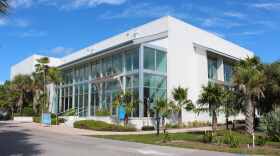The Florida Department of Health in Lee County has canceled five health warnings due to harmful algal blooms in Southwest Florida that have been in effect all summer from the upper Caloosahatchee to the lower, warning of the presence of blue-green algae outbreaks throughout.
It is a reversal of the trend of one-after-another red tide or blue-green algae outbreaks off Southwest Florida since the days after Hurricane Ian in late September 2023.
“It is important that the public exercise caution and good judgment,” the health department said in a press release. “Blue-green algae blooms can move around or subside and then reappear when conditions are favorable again. Residents and visitors are advised to avoid contact with the water if blooms are observed.”
Blue-green algae, scientifically known as cyanobacteria, are minuscule organisms that inhabit freshwater bodies across the nation. These organisms, a natural part of aquatic ecosystems, hold the potential for beauty but also for peril when they overstay their ecological welcome and become slimy, smelly leftovers.
The toxins in blue-green algae can cause liver problems in humans, can kill a family pet like a dog, and sicken anyone who goes swimming in waters with cyanobacteria, especially small children and those with compromised respiratory systems.
The National Weather Service has reported a storm up to eight feet along parts of the Caloosahatchee River in Fort Myers. A tide gauge near downtown Fort Myers measured 7.26 ft above normal. Those factors pushed water up both the Peace and Caloosahatchee rivers.
Hurricane Ian even reversed the direction of the Caloosahatchee Rivers river flow and flooded the streets of the city. The U.S. Geological Survey stream gauge network also recorded the impressive push of surge up the river, but several gauges failed prior to recording a peak water level.
Hurricane Ian washed so much fertilizer, dirt, grime, and other detritus into the Gulf of Mexico after it made landfall off Lee County on June 29 the debris could be seen from space as a lighter blue mass moving north and offshore.
The fertilizer and other “food” for the organism that causes red tide is still thought to be a causal factor in relentless nonstop red tides off the Southwest Florida coast for about six months.
Fertilizer components like phosphate and nitrogen do not start red tide blooms, but scientists are discovering the chemicals can make existing harmful algae blooms worse.
When water temperatures and the chemicals within changed heading into the summer, blue-green algae-laden water was released from Lake Okeechobee into the Caloosahatchee, which then started recording blooms.
WGCU is your trusted source for news and information in Southwest Florida. We are a nonprofit public service, and your support is more critical than ever. Keep public media strong and donate now. Thank you.








